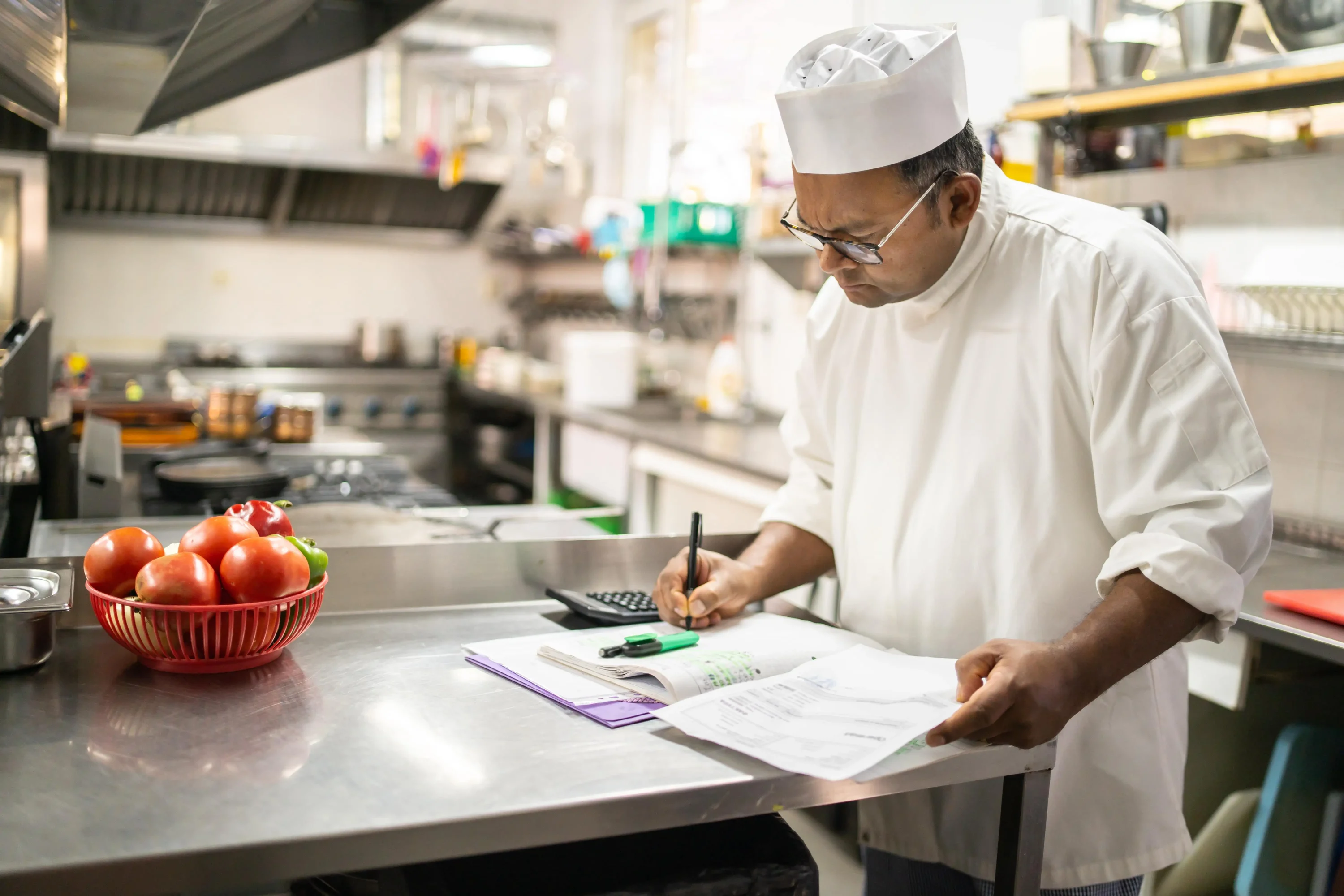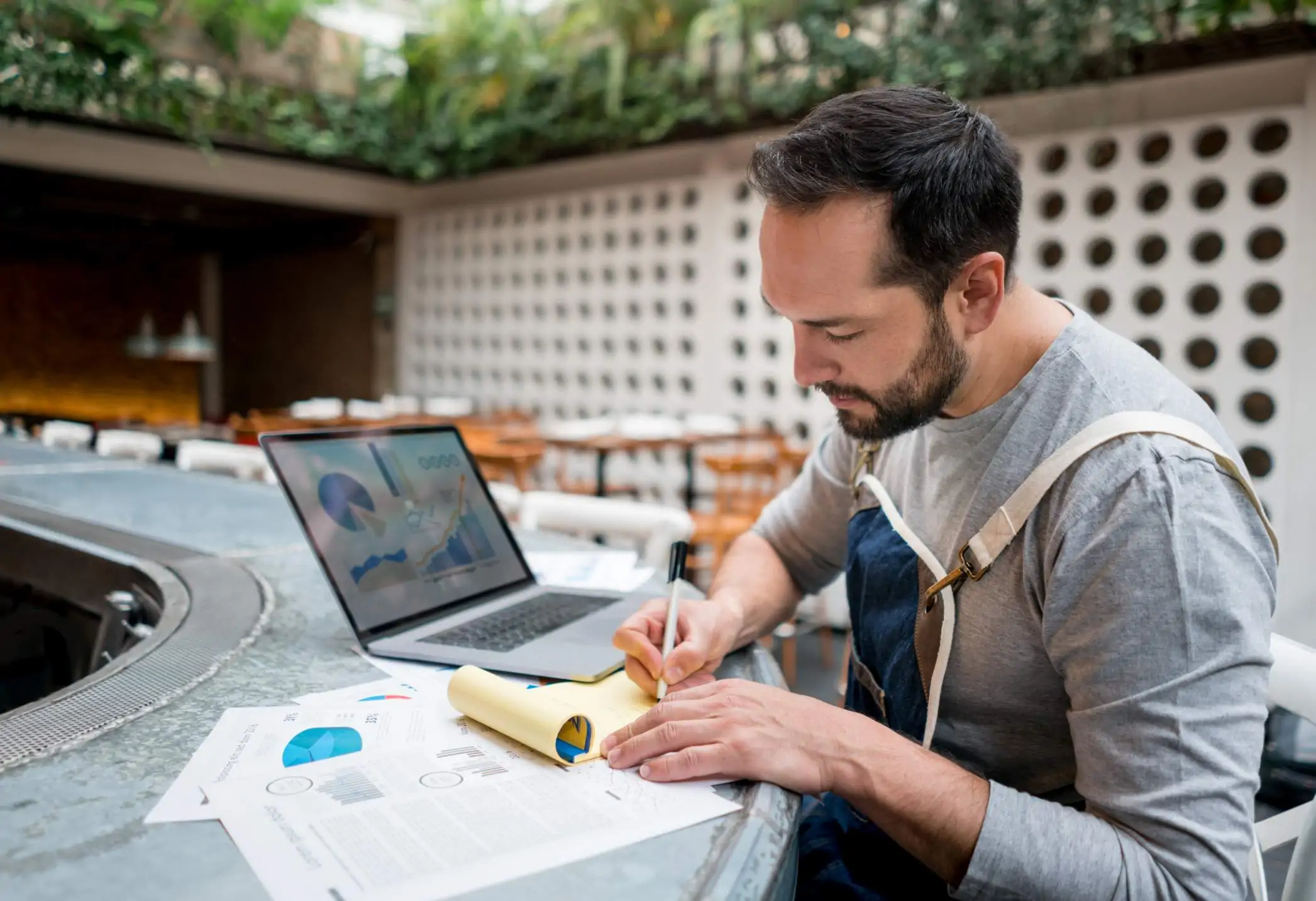Ask any restaurant owner about their biggest headache, and food costs are bound to come up. It’s a constant juggling act, one that requires balancing quality ingredients with profit margins while keeping diners happy. But getting a handle on your food costs doesn’t have to be a nightmare.
In this guide, we cover everything you need to know about breaking down food costs to give you more control over your restaurant.
What’s a good food cost percentage?
Let’s start with food cost percentages and how they can make or break your restaurant’s success. Most thriving spots aim to keep their food costs between 28-32% of their total food sales. Anything higher, and you’re probably leaving money on the table. But how do you figure out where you stand?
How to calculate food cost percentages
The basic formula for calculating food costs isn’t rocket science, but it does require some number crunching:
Food cost % = (beginning inventory plus purchases – ending inventory) / food sales
Sounds simple enough, but let’s explore further.
- Your beginning inventory is all the food you’ve got when you start your tracking period.
- Purchases include any food you buy during that time.
- Ending inventory is what’s left when the period’s over.
- And food sales equate to the cash you brought in from selling meals.
A real-world example
Let’s say you’re looking at a month’s worth of numbers and your beginning inventory was $10,000. You made $25,000 in purchases, and you’re left with $8,000 in ending inventory. Over that same period, your food sales totaled $100,000.
Here’s what that looks like in terms of food cost calculations:
($10,000 + $25,000 – $8,000) / $100,000 = 0.27 or 27%
Try our free food cost calculator so you have the foundation for understanding and managing food costs at your restaurant.
Bringing your food costs down
The above number of 27% looks pretty good, but what if your figures are actually way off? For example, if you’re seeing food costs north of 35%, it’s probably time to explore why these numbers exist further.
Are you wasting food?
Take a long look at waste. Are you throwing out prep that goes bad? Maybe you’re overordering perishables? These seemingly small issues can add up fast and contribute to unnecessary food costs.
What’s the portion control?
Consider portion control. Generous servings might make guests happy in the short term, but your bottom line will be impacted in the medium to long term. Standardizing your portions can make a big difference.
How much do you charge?
Don’t forget to scrutinize your menu pricing. If ingredient costs have gone up (and let’s face it, they probably have), your prices may need to follow suit. There might be some pain with guests if prices need to increase, but ultimately, it’s about staying in business to serve them for years to come
Review your relationships
Supplier relationships matter, too. Shop around and don’t be afraid to negotiate in order to get better deals. Buying in bulk or committing to regular orders often results in more favorable pricing. Just make sure you’re not ordering more than you can use before it spoils.
Tools of the trade
Now, you could track all this with pen and paper, but why make life harder? Many modern POS systems have built-in restaurant food cost calculators. There are also specialized inventory apps that can make tracking much easier. If you’re on a budget, a well-designed spreadsheet can even do the job. The aim is to find a system that you’ll use consistently.
Or you could use OpenTable. We integrate with a host of POS providers so you can learn all the ins and outs about your guests and operations. Get the important data you need and track your food costs, sales, and inventory all in one place.
Going beyond the numbers
Knowing your food cost percentage is just the start. The real magic happens when you put that knowledge to work. Take a good, hard look at your menu. Which dishes are your top earners, and which aren’t getting the same love from diners? Use your restaurant food cost data to highlight profitable items and rethink the ones that aren’t working. That indulgent steak dish probably isn’t worth keeping if it’s barely breaking even.
Don’t forget about seasonal changes. Prices fluctuate throughout the year, so be ready to swap ingredients or adjust prices to keep your costs in check. That summer salad might need a makeover come winter when fresh produce prices skyrocket.
Cross-utilization is also your friend. The more ways you can use an ingredient, the less likely it is to go to waste. Get creative with your menu planning. That herb garnish on your appetizer could become part of a sauce for your entree. Suddenly, you’re using more of what you buy and throwing away less.
Your kitchen team can also contribute to your food cost goals. Make sure they understand why controlling costs matters. Train them on proper portioning and prep techniques. When everyone’s on board, you’ll see better results.
And finally, don’t fall into the trap of calculating your food costs once and calling it a day. Make it a regular part of your routine. Weekly or monthly check-ins can help you catch problems early before they have the chance to get out of control.
The balancing act of food costing
You can’t just cut costs and call it a day. Diners come to your restaurant for quality food, and if they notice a dip, they’ll take their business elsewhere. The goal is finding that sweet spot where your food costs are under control, but your dishes still wow guests. It might take some trial and error, but it’s worth the effort.
Play the long game
Managing food costs isn’t just about pinching pennies. The goal is to create a sustainable restaurant business that can weather tough times and thrive during good ones. Getting a handle on your numbers means you’ll be in a much better position to make smart decisions about everything from menu design to staffing levels and general operations.
Every restaurant is different, so what works for the place down the street might not work for your spot. But if you can stay on top of your costs, willingly make changes, and always keep your diners’ experience in mind, you’ll be on the right track. After all, the goal is to serve great food that keeps people coming back, all while maintaining a healthy profit margin.
It might take some time to get your food costs where you want them, but don’t be discouraged. Small improvements add up over time, and before you know it, you’ll be running a leaner, more profitable operation. Think of it as a marathon, not a sprint. Consistent effort will yield better results than drastic, short-term measures.
Don’t be afraid to seek out help if you need it, either. Whether it’s consulting with a financial advisor, joining a restaurateur support group, or using technology that integrates with your current setup, there are plenty of resources available to help you master the art of food cost management.
Beyond the numbers
The sooner you start tracking and managing your food costs, the sooner you’ll see the benefits. And who knows? You might even start to enjoy the process of optimizing your operations and watching your profit margins grow.
Remember that every great restaurant started somewhere. With dedication, attention to detail, and a willingness to learn and adapt, you can master the art of food cost management. Your restaurant—and your stress levels—will be better for it.
Summary: What’s the cost?
Crunching the numbers might not be the most exciting part of running a restaurant, but it’s more than necessary for staying in the black. With the right tools and a bit of practice, you’ll be a pro at managing food costs in no time.




